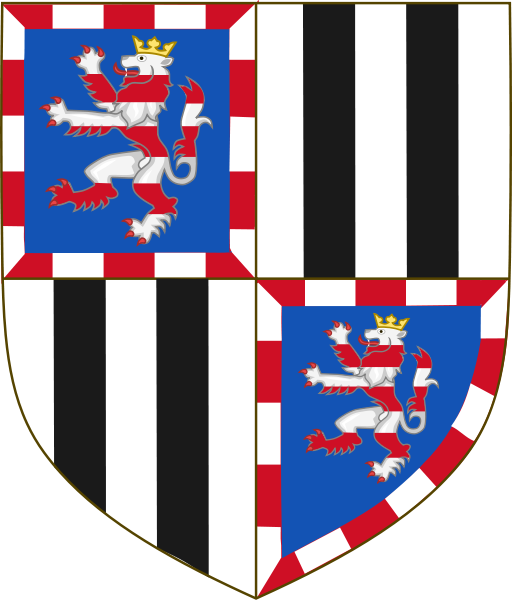|
Beautifully situated in the hills above Jugenheim, this was once the family home of the Battenbergs (Mountbattens) until the estate was sold in 1920.
Originally built as a manor by the court councillor in Darmstadt, August Konrad von Hofmann, who was given the large plot of land on the hill in 1810. In 1827 the future Grand Duchess Wilhelmine purchased the estate and began converting and extending it into a comfortable stately home by commissioning the leading Darmstadt builder Georg Moller in 1831, soon after she became the Grand Duchess and her means swelled. Her son, Prince Alexander of Hesse-Darmstadt, commissioned a further redesign in 1862
and extend the complex into a stately summer residence.
The princes and princesses of Hesse-Darmstadt were, at the time, to be found in most of Europe's leading nobility and royalty and towards the end of the 19th century and beyond Heiligenberg was one of their popular meeting places. This changed dramatically after World War 1 and the last owner, Prince Louis Alexander of Battenberg (later Mountbatten), unfortunately fell into misfortune after the Russian Revolution left a great deal of his wealth dispossessed. His desparate lack
of funds forced him to finally
sell the family home, shortly before his death in 1921.
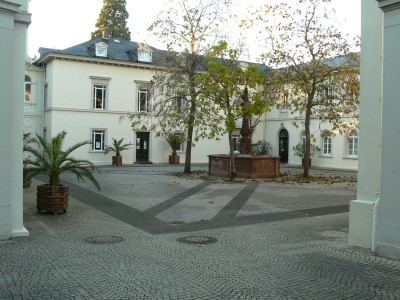
Heiligenberg - The courtyard
|
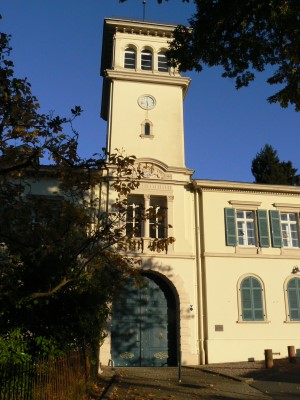
Heiligenberg - The main building
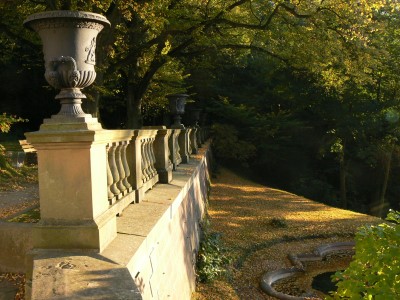
|
|
The buildings were used for many years as a teachers' training centre as well as for art exhibitions and concerts. These were handed over in 2007 to a trust which change legal status in 2012 and is now under the supervision of the city of Darmstadt (Stiftung Heiligenberg Jugenheim)
|
The Battenbergs
|
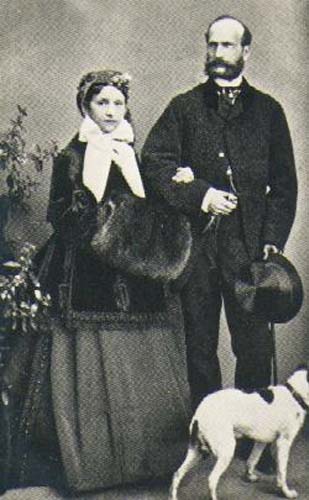 After being dormant since 1310, the line of nobility of the Battenbergs was revived following the morganatic (or left-handed) marriage in 1851 of Prince Alexander of Hesse and by Rhine and Julia Hauke, Polish born and of Roman Catholic confession, who was given the title of Countess of Battenberg. After being dormant since 1310, the line of nobility of the Battenbergs was revived following the morganatic (or left-handed) marriage in 1851 of Prince Alexander of Hesse and by Rhine and Julia Hauke, Polish born and of Roman Catholic confession, who was given the title of Countess of Battenberg.
Prince Alexander followed a typical military career and already at the age of 10 joined the military service in Hesse. Later he followed his sister Marie, who became Tsarina Maria Alexandrowna, to St. Petersberg and climbed the officer's ranks in the Russian army. Due to an affair with the lady-in-waiting in the court of his sister, whom he later married in Wroclaw, Poland, he was degraded in rank and forced to quit Russia. He then joined the Austrian war forces. Upon returning
to Hesse
after his
marriage his spouse was given the family name of Battenberg and Heiligenberg became their family home. Alexander's sister often used the place as her and her husband's, the Tsar of Russia, summer residence. Hence there was a lot of activity at this home before and during the turn of the century until the 1st World War, after which the importance of this estate began to deteriorate rapidly (see line of nobility).
|
|
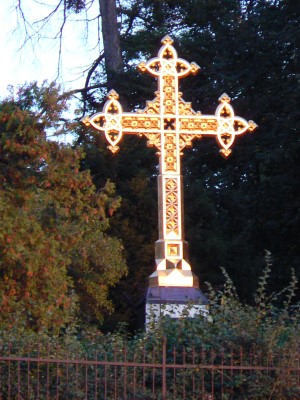
Golden Cross
|
Walking west from the main buildings the old ruins of an ancient convent can still be seen. Leading through (locked) gates the path goes past possibly one of the oldest lime trees in Hesse allegedly more than 800 years old.
In these private gardens the Battenberg family erected a grave in 1884 where the mortal remains of the Alexander and Julia rest in peace. Next to the mausoleum is the "Golden Cross" erected in 1866 in memory of Alexander's
mother, Wilhelmine, who died in 1836. This large, seven metre high cross commands a wonderful view over the Rhine valley and can even be seen from the Rhine below reflecting the evening sun. It was constructed by the sculptor Johann Baptist Scholl and his son Karl who, at the time, were living in Darmstadt and constructed many memorials and ornate fountains in the area.
|
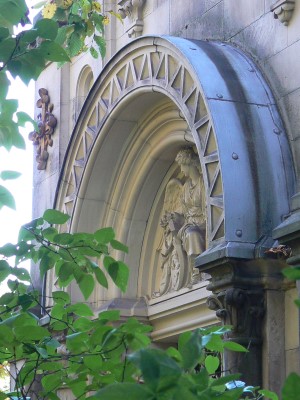
Entrance to Mausoleum
|

|
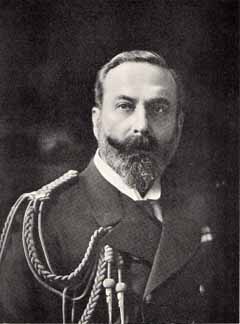 The first son of Prince Alexander and Countess Julia, Louis Alexander of Battenberg, became First Sealord of the Royal Navy (1912 - 1914), from which he had to resign at the outbreak of WW I. In 1917, due to continued anti-German feeling, he had to relinquish all his German titles and even change his family name to Mountbatten. He was then given the newly created title of Marquess of Milford Haven as well as being made Earl of Medina and Viscount Alderny. The first son of Prince Alexander and Countess Julia, Louis Alexander of Battenberg, became First Sealord of the Royal Navy (1912 - 1914), from which he had to resign at the outbreak of WW I. In 1917, due to continued anti-German feeling, he had to relinquish all his German titles and even change his family name to Mountbatten. He was then given the newly created title of Marquess of Milford Haven as well as being made Earl of Medina and Viscount Alderny.
Due to financial losses occurred in investments he had in Russia he was forced to sell the family home, Kent House in East Cowes, Isle of Wight, and, in 1920, also had to part with the inherited Battenberg's German estate, Heiligenberg, in Jugenheim. He died in 1921 and was given a funeral service in Westminster Abbey. He is buried in the family grave at St. Mildred's Church, Whippingham on the Isle of White.
|
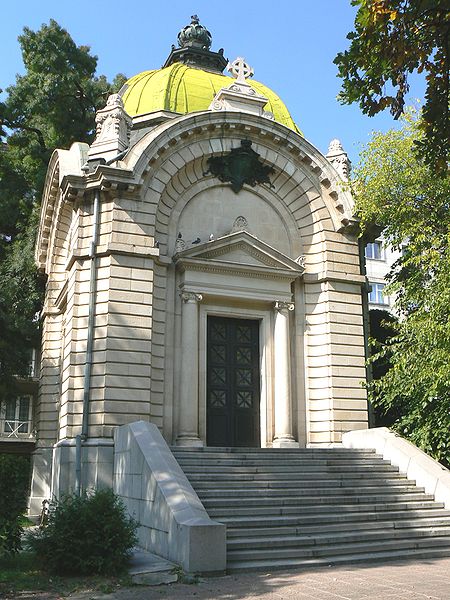
|
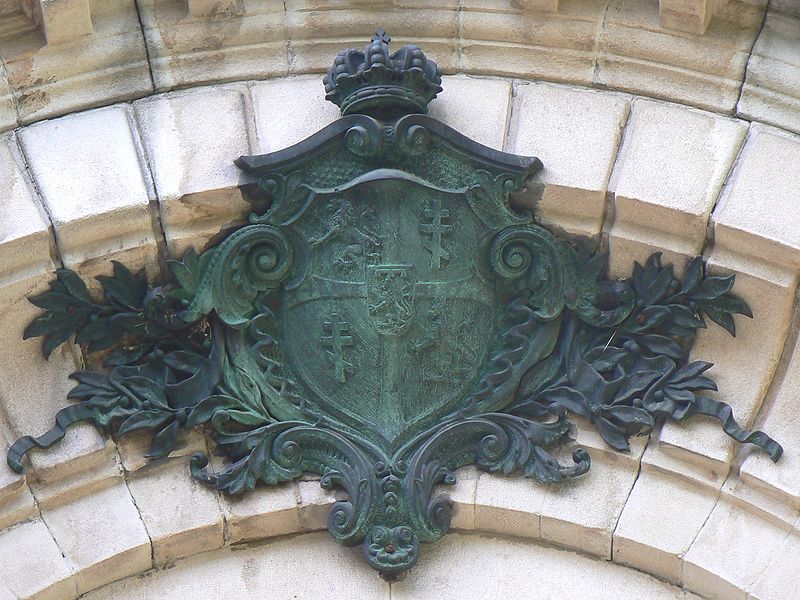 The second son of Prince Alexander and Countess Julia, Alexander Joseph of Battenberg, became the Prince of Bulgaria in 1879, the first head of state of modern Bulgaria. In 1893 he died in Graz and was initially buried there. The second son of Prince Alexander and Countess Julia, Alexander Joseph of Battenberg, became the Prince of Bulgaria in 1879, the first head of state of modern Bulgaria. In 1893 he died in Graz and was initially buried there.
In accordance with his wish, he was moved to Sofia with a state burial in 1897 and laid to rest in the newly built family mausoleum in the city centre (see photo on the left). Notice the coat of arms above the entrance to the mausoleum which is also depicted at the top of this page. In the centre is the white and red horizontally striped lion of Hesse.
|
Written, compiled and all photographs of Heiligenberg by Johnny Glover, Lautertal
© 2010
|
